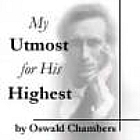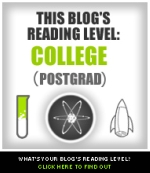Most of us are used to thinking of writing as a dread duty from deep in the dark dungeons of English class. Nothing could be further from the truth. Zinsser demonstrates that writing, as a universal communication tool, is the single key capable of unlocking the vast empires of knowledge, information, and ideas.
But wait, you say, what about reading? Can't I read my way to mastery in a subject? Well, you can and you can't. Here's why: on my beloved activity/passivity scale, reading falls somewhere above television, but somewhere below writing. I know from personal experience that it is possible to be reading along happily, look up, and then not have the faintest clue where you were. Not very productive.
 Writing is different. As Zinsser says, quoting from a Professor-friend of his: "Writing is an effective means of improving thinking skills because a person must mentally process ideas in order to write an explanation. Writing also improves self-esteem because mentally processed ideas then belong to the writer and not just to the teacher or the textbook author." (- Ch. 11, Writing Physics and Chemistry) Coincidentally, today's Utmost adds a sharp spiritual dimension to this point. ("If you cannot express yourself on any subject, struggle until you can...")
Writing is different. As Zinsser says, quoting from a Professor-friend of his: "Writing is an effective means of improving thinking skills because a person must mentally process ideas in order to write an explanation. Writing also improves self-esteem because mentally processed ideas then belong to the writer and not just to the teacher or the textbook author." (- Ch. 11, Writing Physics and Chemistry) Coincidentally, today's Utmost adds a sharp spiritual dimension to this point. ("If you cannot express yourself on any subject, struggle until you can...")To summarize Zinsser's main premise in one sentence, it is that writing serves as a universal aid to clear thinking. (Hence the title of the book.) He demystifies the process, noting simply that "writing is thinking on paper," and then assigns the blame where it is due: "The hard part isn't the writing; the hard part is the thinking."
"We write to find out what we know and what we want to say. I thought of how often as a writer I had made clear to myself some subject I had previously known nothing about by just putting one sentence after another - by reasoning my way in sequential steps to its meaning. I thought of how often the act of writing even the simplest document - a letter, for instance - had clarified my half formed ideas. Writing and thinking and learning were the same process." (-Preface)
"They looked like writers - they were thinking hard and laboriously putting sentences on paper and crossing out sentences that obviously didn't express what they were thinking, perhaps because their thinking kept changing as they wrote and discovered what they really thought." (-Ch. 9, Writing Mathematics)
Zinsser divided the book into two sections. The first develops the core ideas, and the second applies these ideas to the various branches of learning. There are generous samples of "accessible literature" from a wide spectrum of disciplines, from calculus to connotation to chemistry.
The book brims with an exuberant humanism, which is hard to disparage. I'm starting to feel that the problem with humanism is not that it goes down the wrong road, but rather that it does not go far enough down the right road. Christianity is, at least in a sense, the epitome of humanism, as I have hinted at in several previous posts.
"There was no mistaking the men and women I wanted to have along on the ride. They all had the rare gift of enthusiasm. Again and again I was struck by the exuberance that these writers brought to what they were writing about. Whatever the writer and whatever the subject ... the common thread is a sense of high enjoyment, zest, and wonder. Perhaps, both in learning to write and writing to learn, they are the only ingredients that really matter." (-Preface)
Image courtesy of amazon.com












No comments:
Post a Comment